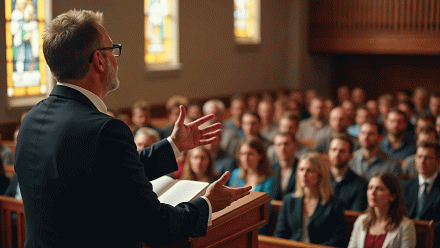Background
Years ago, a Georgia teen, Alex Boston, sued two of her classmates for defamation and libel after they created a false Facebook page purporting to be Boston’s own page. ABC News reported that the page contained taunts, links to racist websites, and reports of sexual exploits. According to the ABC News report, the lawsuit alleged school officials did nothing about the page because it represented an off-campus activity.
The lawsuit named the two students and their parents as defendants and claimed, “humiliation, mental anguish, harassment and emotional and physical distress,” according to the news report.
The reality of cyberbullying
Boston’s story highlights the reality that social media can and sometimes is used to bully others.
Cyberbullying is at the heart of several high-profile cases that have involved suicide in some of the more extreme examples.
It is difficult to gauge the depth of trauma associated with cyberbullying, but it is important to seriously consider your church’s ability to combat it.
What is cyberbullying?
In cyberbullying, the victim can be intimidated on a computer screen or cell phone. And while many bullying incidents are relatively private, frequently the whole world can see the encounter online.
Fortunately, this rarely happens overtly in the social media life of a church. But that doesn’t mean churches can let their guards down. What happens in society inevitably spills into the life of the local church.
The children and youth who are bullied (one-third of all junior high and high school students, according to one statistic), and the bullies themselves, often are the same kids who participate in a church’s activities. As with many problems, leaders need to be prepared to recognize and respond to the possibilities of the changing face of bullying.
A bigger problem than churches may realize
“I think it’s bigger than we understand,” said CJ Malott, student pastor at Fielder Church in Arlington, Texas.
“We’re ready to deal with the issue of sexuality. We’re quick [to respond to] alcohol and drug abuse. But we dismiss bullying a little bit easier. We don’t take it to heart as much as the sex, drugs, and alcohol. In the long run, that could end up hurting us, because I only see it getting worse.”
Traditional bullying happens face-to-face, in private encounters, or on the schoolyard with an audience. While always possible, this kind of bullying on church property or during church activities is relatively rare.
“Even with kids we know to be bullies outside the church setting, when they come onto our campus, they don’t do a lot of that here. Whether from conviction or an understanding of where they are, it doesn’t happen a lot,” said Malott.
Bullies are understandably hesitant to persecute their peers in a well-organized church setting. However, a physical encounter is no longer the only—or even preferred—outlet for a bully’s cruelty.
Getting pushy on the digital playground
“Bullying” and “cyberbullying” are not legal terms. They are umbrella phrases that cover a variety of behaviors. As such, there are a range of uses for the terms. According to Paula Burns, an agent for Insurance One Agency who studies bullying and other social media risks, these differing definitions agree on key points. With these in mind, it can be said that bullying can include some or all of these elements:
- Attack or intimidation with the intention to cause fear, distress or harm
- Physical attacks, such as hitting, punching, or taking property
- Verbal attacks, such as name calling or teasing
- Psychological/relational attacks, such spreading rumors and social exclusion
- The presence of a real or perceived imbalance of power between the bully and the victim
- Repeated incidents between the attacker and the victim
According to Burns, cyberbullying is “an aggressive, intentional act carried out by a group or individual using electronic forms of contact repeatedly and over time against a victim who cannot easily defend him or herself.”
It can take the form of sending mean, vulgar, or threatening messages and images, posting sensitive or false information about a person, pretending to be someone else in order to make that person look bad, or intentionally excluding someone from an online group.
But leaders should realize that being the victim of such behaviors carries its own inherent stigma. No one wants to admit to being bullied. According to Malott, middle-schoolers and high-schoolers don’t particularly like to use the term “bullying.” He observes that “A lot of students ask for counseling about being bullied, but they say they’re being ‘picked on,’ or ‘made fun of.’ They don’t use the word ‘bullying’ anymore, but that’s what it is.”
Legally, a church is at risk if it fails to monitor and supervise youth under its direct care. Churches may be at legal risk if they know bullying goes on and yet do not take appropriate action to recognize and respond to such situations.
Policies and Protection
So many of these potential situations are digital that the Internet may be the area of biggest risk, according to church law attorney Frank Sommerville.
“Churches have to have a good social media policy if they are writing on behalf of the church or if it’s a church Facebook page,” he said. “That means you have the responsibility to monitor what’s being posted and to remove those comments that are inappropriate. Having good policies in place goes a long way toward reducing the risks that are out there.”
Access to church social media pages
That kind of policy is in place at Fielder Church, said Malott. Each student ministry staff member has administrative rights to the ministry’s Facebook page.
“Anything that hits the page gets pushed to us so we can quickly see whether it’s appropriate. If it isn’t, any one of us can remove it,” said Malott. “You can come into our student ministry facilities and get connected to our Wi-Fi as a guest without a password. But it’s extremely protected by Barracuda software. So we have layers of protection.”
Review internet use policies
An Internet use policy for church staff and workers should specifically state that no cyberbullying is permitted on any church-related website, including blogs by pastors and staff, Burns said. Although these blogs often do not apply to issues of children and youth, they do fit into the wider area of cyberliability.
Insurance companies offer cyberliability policies to protect businesses and non-profit organizations from risks associated with Internet communication and commerce. Cyberbullying may need to be included with a policy that covers other items, such as invasion of privacy, libel, slander, and copyright infringement.
“If you put on Facebook that so-and-so is sleeping around, that will be a slanderous statement, even if it’s true, because it denigrates the reputation of the person they’re talking about,” said Sommerville.
Should a church have a written policy covering bullying of both the old-fashioned, personal type and the newer, technology-driven variety?
“I don’t think the law is the best place to address this issue,” Sommerville said. “A written policy, if a church is not going to follow it, is worse than no policy at all. Ask if your existing policies adequately address your responsibilities if you’re going to have a webpage, chat rooms, or social media sites.”
A downloadable resource, Using Social Media Safely, provides guidance for churches trying to craft a social media use policy.
“Big-time” Bullying
In rare cases, the victims of bullying have been the youth pastors and workers and the bullies have been the students.
“I know of a youth minister who had some girls who had a beef with him, made accusations, took it to the Internet and ganged up on him,” said Malott. “The guy ended up resigning because it all became too much. When I heard the story, I didn’t believe it could happen in real life. But it was the guy’s testimony. As a student pastor, that makes me nervous.”
Educate church staff and youth
Despite the legal murkiness of the subject, churches can empower staff and students by teaching about bullying and knowing what to do if an incident flares up. Student codes of conduct, in whatever form they take, should be clear that bullying of any kind will not be tolerated.
“As a church, we should be educating parents,” said Burns. “Have parents and student youth ministry leaders get together and talk about what to do when someone is cyberbullied. It would be great to do an educational campaign for the students and the parents to understand the impact of this, because sometimes they just think it’s funny.”
If an incident of bullying occurs, including those involving a physical altercation, churches should notify parents and make an incident report, said Burns.
“You don’t know if the parents will come back and say the church was negligent in supervising their children,” she explained.
Cyberbullying may be so new that churches, lawyers, and insurance companies are still learning how to cover it from a liability and risk reduction standpoint. One thing is likely, however: bullying, which has a history as old as humanity, won’t disappear.
“I don’t know where all of it is going,” said Malott, “but it’s not an issue that’s going to go away.”



















